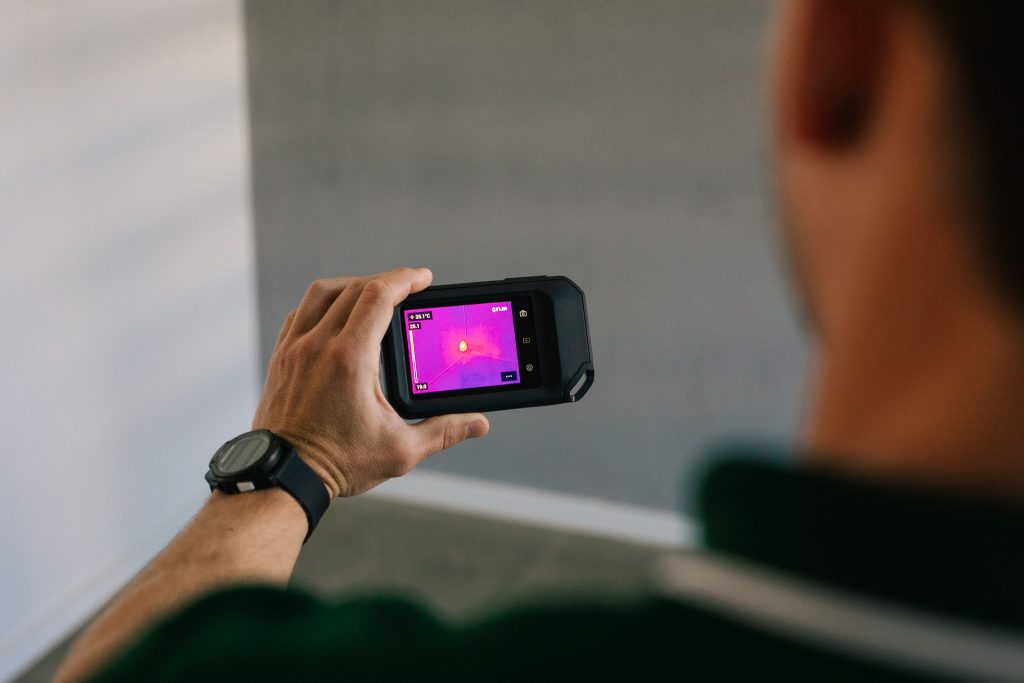Thermal Imaging Cameras for Termite Inspections In Australian Condition
- February 6, 2021
- in Pest Control
- by Ashley Dando

Many customers show an unprecedented level of interest in our thermal imaging cameras . They usually ask us about our termite detection technology. These cameras may appear to be a work of science fiction to some people. However, they are amongst the handiest tools one can have for controlling termites.
Earlier, pest controllers used to conduct termite inspections based on visual examination of a property. They used their skill and experience to only look in those areas known to be preferred by termites. They would check roof voids, the area between the walls, under the floor and any other such space made of timber.
It is usually impossible to find termite-infested regions because they eat the timber structures from the inside out, leaving only a thin covering intact. It implies that termites typically establish themselves in hard to reach locations. Most of the time, it is challenging to spot termite infestation without inspecting every area in detail.
Typically, it implies that one needs to drill into building materials and knock or tap against every timber structure to disturb termites or listen to their unique noise while they move.
Presently, pest control professionals use equipment like motion sensors, thermal imaging cameras and moisture detectors like Tramex Moisture Meter to increase inspection accuracy to detect active termites.
Pest control professionals have dramatically improved termite detection by using thermal imaging cameras. It has changed the industry for the better and such devices have now become part of standard Australian termite management. The standard AS3660.2/2017 is applicable for termite management in existing building and structures.
Unlike deceptive claims by some other pest control companies, we cannot see through walls because thermal imaging cameras only detect heat signatures. Termites settle in by creating humidity and moisture in their living areas but also emit some heat. The camera picks up this heat as yellow or red indicators on the camera screen. That is what we precisely catch by thermal imaging – the presence of termites.

We perform a visual inspection because it is easy and apparent to spot some termite infestation with naked eyes. We also use some necessary equipment like torches and tapping sticks for preliminary assessment as follows:
We typically use imaging techniques on those areas where we suspect termite presence during our preliminary inspection.
The problem with visual assessment is that it can miss more than 80% of what goes on behind the walls and hard to reach places like the roof. Pest control professionals use moisture detection devices to pinpoint moist or humid areas, but they work in a targeted and concentrated way. They can use the devices only in small spaces like physically up against a wall.
Another problem with such devices is that they can pick up all moisture areas, including water leaks. Hence, they cannot tell us precisely what the problem is. It merely indicates that there may be a problem: a leakage or termites, or anything else.
However, the thermal imaging cameras that we use will catch a heat spot behind a wall. In 99% of cases, such sites in wall cavities are sub-nests of Schedorhinotermes or Coptotermes. This also allows customers to see the heat pattern behind the walls or structure for themselves. It becomes an actual record of termite activity when we confirm it with a motion detector. This allows us to be very specific in pinpointing the exact location of termite activity, and showing this to our customers.
Companies don’t make all thermal imaging cameras equally. We use FLIR cameras because they are one of the best in the industry. They can offer accurate and high-resolution thermal imaging solutions. They are costly at around $1500.00 per device. We use FLIR C5 compact camera with the 160 x 120 (19,200 pixels) true thermal imagery, MSX® (Multi-Spectral Dynamic Imaging), 5-megapixel visual camera, and LED flashlight. The high quality of this tool means it is ultra-accurate in its detection of termites.
One can also purchase cheaper, entry-level imaging cameras in 80×180 pixels, and are available as handheld devices like mobile phones. These cameras are merely less precise and less sensitive than the ones we use. Pest control companies using these cheaper versions usually try to speed up the process at your property and don’t perform a thorough inspection overall. Some of them may even just be posing that they have a thermal imaging camera as a sales tool. They may not use any cameras during your inspection.
We guarantee the best results every time because we use the best thermal imaging equipment. We spend every cent to ensure that you get the best pest control protection services. Our team of skilled technicians can handle your inspection by providing best suggestions for removing infestation and prevent pests from invading your property.
Apart from using the best equipment, we offer the following:
If you need the best services in termite treatment solutions and pest control, get in touch with Safeguard Pest Control today.
Array